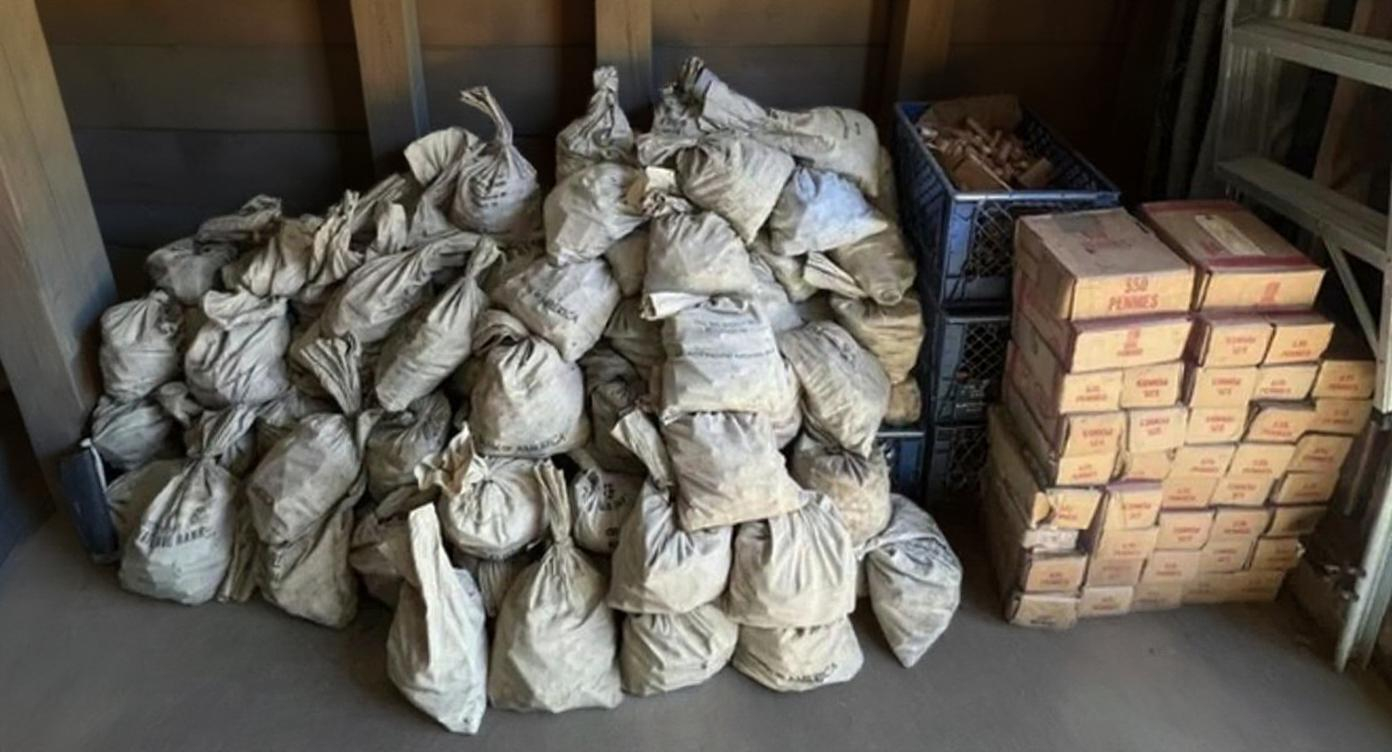The Hidden Treasure Beneath the Stairs
When Michael Carter agreed to help his wife, Hannah, clean out her late father’s house in Pasadena, California, he expected a weekend filled with dust, old memories, and maybe a few keepsakes. What he didn’t expect was a discovery so astonishing it would forever reshape the way he remembered his father-in-law.
They had already spent hours sorting through boxes of faded photographs and decades-old books when Hannah turned to him and said, “We should check the basement.”
Michael hesitated, gripping a flashlight.
“Are you sure? Your dad never let anyone down there.”
Hannah gave a small nod. “Yeah. It’s probably just rusty tools and old junk. But we should see.”
The basement smelled of mildew and time. Dim light filtered in through a single narrow window, and cobwebs stretched like drapes from beam to beam. As Michael descended the creaky stairs, his foot nudged something—a worn canvas bag, half-hidden beneath crumbling newspapers. Curious, he crouched down and opened it.
Inside were rolls upon rolls of coins, each carefully wrapped.
“Babe… I think you need to see this,” he called out.
Hannah rushed down. “What is it?”
He opened another bag—more coins. Copper. Dozens of tightly packed rolls.
Within the next hour, they uncovered more than a dozen heavy bags, each filled to the brim with neatly organized coin rolls. Some were stamped with “U.S. Mint,” others bore the names of banks—Bank of America, Wells Fargo, and some from institutions that no longer existed. A few even had bank seals untouched since the 1970s or earlier.
Michael’s hands shook. “This isn’t just pocket change. This is a serious collection.”
He pulled out his phone, did some rough math, then used an old scale they found in the garage to weigh one of the bags.
“If this is accurate,” he murmured, “and we’ve got forty bags like this… we might be looking at over a million pennies. That’s at least $10,000 in face value. And possibly a whole lot more if any of these are rare.”
They spent the rest of the day hauling the bags out of the basement into a rented truck. It took both of them—and two neighbors—nearly eight hours to move the entire stash.
That night, exhausted but restless with curiosity, Michael sat at the kitchen table, rolling one of the coins between his fingers.
“Why would your dad keep all this?” he asked quietly.
Hannah gave a half-shrug. “He never talked much about money. But he and his brother came from Germany in the ‘60s. Maybe it was just something he started doing… and never stopped.”
Later, digging through online forums and old articles, Michael found that in the early 1980s, the U.S. Mint switched from using copper in pennies to cheaper zinc. Some collectors believed copper pennies would one day become rare or valuable. Michael began to suspect that this was when Frederick “Fritz” Bauer—his quiet, meticulous father-in-law—started collecting.
“He always kept to himself,” Hannah said, almost in disbelief. “I never imagined he was building something like this.”
The following week, Michael tried to cash in the coins at several banks. But none would take them.
“Sir,” one manager told him, “we don’t have the vault space. And we couldn’t process that many pennies even if we did.”
Another suggested bringing in only a few hundred dollars at a time. But most of the rolls were tightly sealed—some in mint condition—and Michael didn’t want to risk opening them and possibly destroying their collector value.
One bank manager offered a different idea:
“You might want to contact a coin expert. There could be some rare pieces in there worth far more than just face value.”
Taking the advice, Michael reached out to several numismatists. One appraiser, after reviewing photos, was stunned.
“This is the kind of find we dream about,” the expert said. “Some of these coins could be worth hundreds—maybe thousands of dollars each.”
News spread, and offers started rolling in. Some collectors wanted specific rolls; others offered lump sums for small batches. But Michael hesitated.
“What if there’s a single coin in here worth a fortune?” he told Hannah one night. “In 2010, a 1943 bronze penny sold for over $1.7 million. What if we give away something like that without knowing?”
Hannah nodded thoughtfully. “Then maybe we don’t sell anything. Not yet. Not until we’re sure.”
Today, the coin collection remains in the Carter family’s hands, securely stored while they consult historians, appraisers, and financial advisors. Though Michael is tempted by the value, he sees something deeper than money.
“It’s more than just coins,” he told a local reporter. “It’s a legacy. My father-in-law didn’t leave a will. He left a mystery. A symbol of patience, maybe even obsession. But above all, he left a story.”
And what a story it turned out to be.
